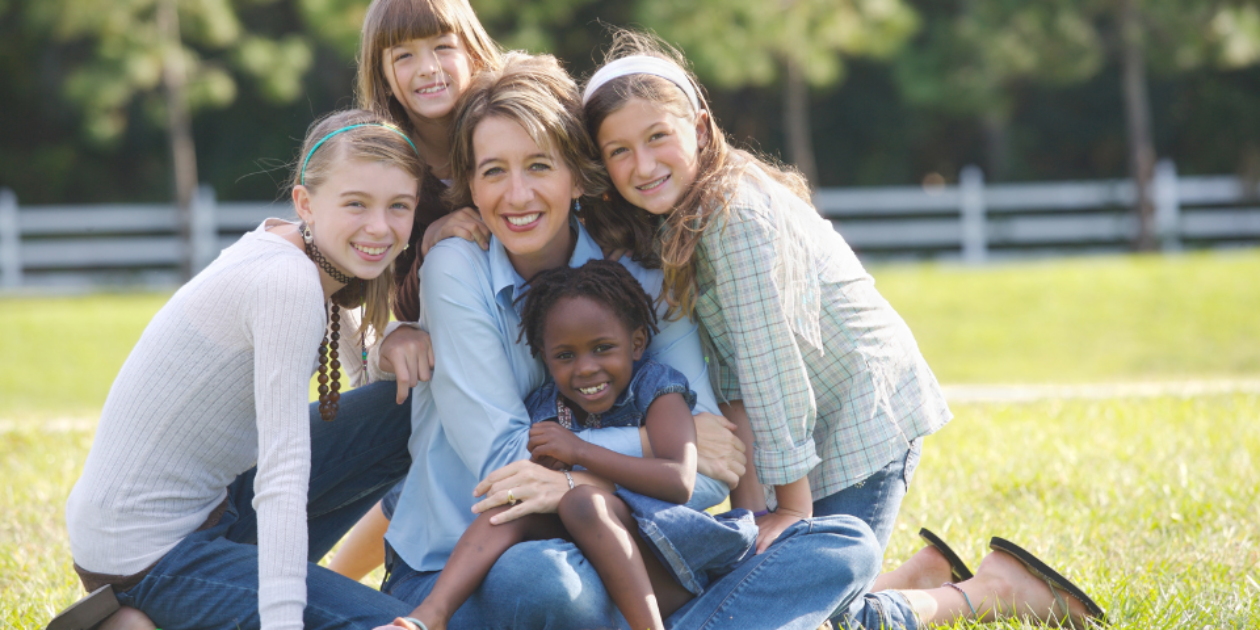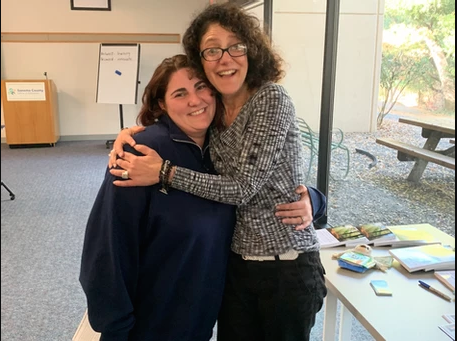Transracial Families
By Trish Jonker, MA, LCPC
Inviting a child from another culture, ethnicity or even country into your home can seem fun at the time. Babies and children that look different can be seen as adorable, and we all love to get close to them. I have been guilty of this myself. But then you are in the middle of it.
Once you are responsible for parenting that child, it is a whole new level of responsibility. It is a time to slow down and figure out how you will invite that culture, that ethnicity, that country not just into your child’s world, but your own. If you are truly to become a family, you cannot leave that piece of them out. If you are to blend together as a unit, you will need to embrace that part of who they are, not just on special holidays, but every day.
My children may live with white parents, but we are not a white family. We are a transracial family. I need to embrace the fact that my home is often mostly black. But there is no real parenting class to prepare us for this. There is no checklist of things to put in my heart in order to make me more culturally aware. I can go out and get bedding and toothbrushes and stock the snack cupboard. But it is the subtle, white ways I live my life that I need to learn to flex in order to create a transracial home.
Whether you have already welcomed a child of another culture and / or ethnicity into your home or not, it is never too early or too late to begin to process your own racial identity and bias. It is always the right time to begin to learn about that child’s experience and how you can continue it in your home.
In my book, The Call to Love, I share some small ways that we have attempted to continue to support our children and their racial identity.
I have also listened to other parents and what they have done in their homes. So building on what I bring up in the book, the following list is a deeper dive for you to think about this week:
- Watch movies and documentaries. I have tried to watch a number of films but one that has stayed with me the longest regarding African Americans is the 2016 documentary 13th.
- Read books. There are some good ones out there, like I’m Still Here: Black Dignity in a World Made for Whiteness. You may also want to check out Inside Transracial Adoption or White Fragility.
- Racial mirroring. It is important for you to step back and allow your child to be influenced by other adults that look like them. I have heard of families hiring mentors to meet regularly with their child. Some families have switched churches so that their child is in the majority. Although I could learn to do my children’s hair, we have chosen to have them go to a beauty shop where they are surrounded by African American men and women… and I often wait in the car or sit off to the side. Some families have moved school districts in order for their children to have more exposure to teachers and community leaders that look like them.
- Be mindful how you play. Are the toys you buy for your children diverse, or do you only have blond dolls? Are the movies your kids watch diverse, or full of white people? When your little girl asks who is your favorite Disney Princess, have you thought to say, Tiana or Mulan or Moana? Are books you read with them full of relatable characters? What subtle messages are you bringing into your child’s mind with the way you play with them?
- Food is Comfort. For all of us! So if your child has some favorite foods that you have not tried before, also welcome those preferences into your home. Figure out the local market where you can purchase those items, learn some new recipes, and embrace your transracial identity.
- Watch your words. When you are speaking of your child’s food preferences, hair differences, or culture, is it positive or negative? Even when you think they are not listening, we all know they are. So as you chat with another parent, listen to your words. Is it a chore or an honor that you have learned how to do their hair? Is it a sacrifice or a privilege that you are all eating their favorite foods?
- Decorate Diversely. Look around your home. Whose identity does it reflect? How does it make you feel? Is it transracial? Consider investing in some simple items around your home that will reflect all of those who live there.
- Thoughtfully plan vacations. Think through where you will spend your time together as a family. Some families may choose to vacation in places that are closer to their child’s culture, in order for them all to connect to that child’s identity. Others may choose to attend adoption family camps that celebrate bringing together children adopted from the same country. While it might not be your first choice location, and there might not be a spa or beach nearby, it could change the way you view your child’s culture and help them connect with others like them.
- Be mindful of the therapists you choose for individual or family therapy. If your child looks like their therapist they are more likely to feel that they can be honest about any struggles. It may mean you are on a wait list a bit longer, but creating that safe space for them is worth it. You can start by checking out Inclusive Therapists or Therapy in Color to find someone near you.
What is one thing you can do this week to make your home more open to your child’s culture, ethnicity or country?
Further Resources on parenting African American children…
My experience has been in parenting African American children and teens, which may be a different experience from yours. Roy & I have both worked hard to embrace the challenge of transracial parenting. Here are a few online resources I think could be helpful to white parents of black children. They cover a lot of ideas. Maybe subscribe to a blog or watch some fun hair care tutorials!
MyBrownBaby.com is a well written black parenting website with lots of thought provoking ideas, including hair care for children.
Elle P Stewart has a YouTube channel that covers everything from fun videos for kids to hair care.
CrystalSwainBates.com is an author writing children’s books and creating children’s coloring books that are full of African American characters. Her most famous book is Big Hair Don’t Care.
MoxieMcGriff.com The Adventures of Moxie McGriff started as a children’s book inspired, designed and co-written by Natalie McGriff, a delightfully funny brown-skinned girl who previously suffered from low self-esteem regarding her hair texture and skin tone. She is now proud to be herself and seeking to empower other girls of color by creating a story which transforms what many may see as flaws into super powers. Check out their site for many different resources.
Natural Hair Kids offers parents tons of African American hair care information. It starts with the basics of building a regimen and hair typing, as well as recommended products and tutorials along.
GirlsLoveYourCurls is a YouTube channel from Nadine and her daughters & son who talk about simple hair care tips and accessories for infants all the way through the teen girls showing you how they do their hair themselves. She is funny and inspirational, including not just tips but advice about the messages we send our children when we talk about their hair.
Styles 4 Kidz is a non profit in the Chicago area providing children and families with professional tips, tools, and a little TLC to make caring for African-American hair fun. They offer in person and online classes as well as styling in their shop. It’s where I take my little girls!
Trish Jonker has a Masters degree in Counseling Psychology and is currently a licensed counselor in 11 states and is certified in Integrative Medicine for Mental Health. But she’s not just a counselor, for the past 10yrs she has also been a foster mom / legal guardian to 8 kiddos (who are now ages 10 – 24). So taking her academic & professional work and combining it with her personal experience, she has created a counseling practice specializing in supporting foster & adoptive families through telehealth & in person sessions. You can learn more about their story in her book, The Call to Love (available on Audible, Amazon & iTunes or at trishjonker.com). Trish is available for telehealth services and is a valued contributor to Help One Child’s blog and podcast.









